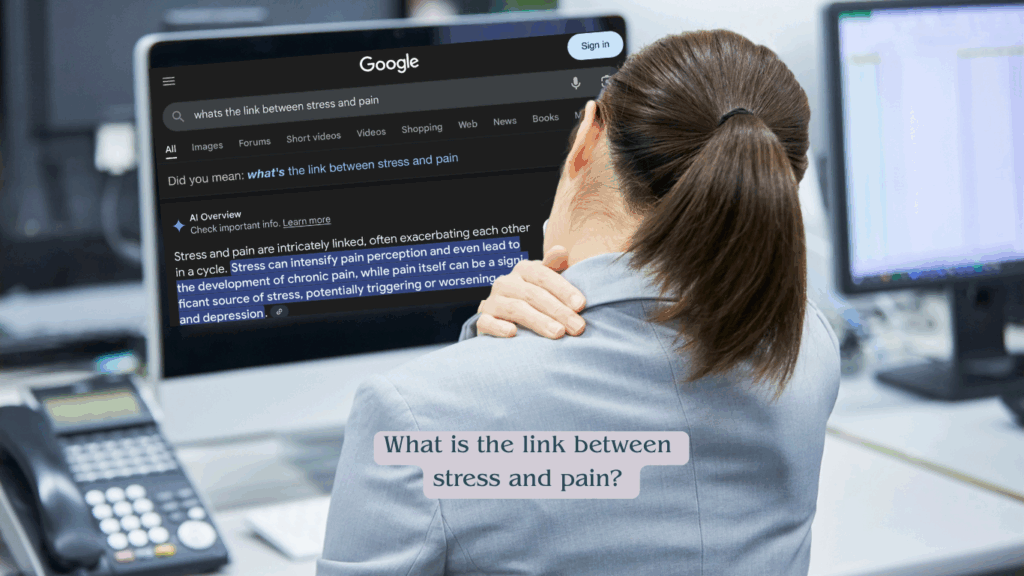Back to Wellness Hub

Back Pain
Why your desk posture isn’t the cause of your back pain
Our posture, especially at our desks, is often thought to be the culprit for causing back pain. When I was in the military we had to do work station assessments every year, as this was the military's answer to reducing back pain in the work place. Did it work.....no!! Here's why.
Articles
Back pain is one of leading reasons for people taking sick leaveI. Many people blame desk posture as the cause of their back but, modern pain science suggests this may not be the case. Peter O’Sullivan, a Physiotherapist/Pain Scientist in Australia was recently interviewed on the Rangan Chatterjee podcast stating that lower back pain is caused by poor posture when sitting, standing and lifting is a myth. You can listen to this podcast here. I would like to unpick this myth in this article.
It is true that if we spend a long time sat at our desks with poor posture we can experience discomfort and pain. Our muscles can become tight and overused, and this can cause pain, but please bear with me on this as I help you to explore some other factors that might be at play.
For many the root cause of their pain goes much deeper than simply having tight muscles. Let’s explore how stress, repressed emotions, and your nervous system can play a pivotal role in back pain and why your desk might not be solely to blame.
Stress is a silent contributor to chronic pain, especially in the back. When we’re under constant pressures; whether from work, relationships, financial or life in general, our nervous system responds by creating tension in the muscles which causes pain. It’s akin to putting on body armour for our protection. Sadly our society is a perfect breeding ground for chronic stress. Can you remember back to when your pain began, were you experiencing any kind of stress? You’ve probably sat at your desk for many hours over the years and it hasn’t caused you pain, so why now? Is there a chance your pain flares up when work pressures increase, deadlines loom or other stressors exist?
Our current society dictates that it is not cool to express emotion for fear of rejection, stigma around mental health, maybe early conditioning in childhood has taught us to hold back emotions. These phrases come to mind: “keep calm and carry on”, “showing emotion is weak”, “bite the bullet”, “boys don’t cry”. Dr John Sarno, a physician in America coined the term Tension Myoneural Syndrome which links repressing emotion to physical pain in a similar way to what I explained in the previous paragraph about muscles becoming tight.
It’s much easier to repress/bury emotions especially when they are difficult ones, but the body expresses them as physical pain in a way of trying to signal to you that something needs addressing. Dr Gabor Mate wrote an incredible book called the “Body Says No” which explains this beautifully. This does not mean your pain is in your head, or isn’t real. It absolutely is real but the origins of it might not be so obvious. Are you repressing emotions? Maybe you feel you can’t tell someone what you are really thinking, or are you hiding the way you really feel in the work place or even at home? Are you a ‘people pleaser’ and always say ‘yes’ even though you don’t want to?
- Nervous system dysregulation
Our central nervous system (brain and spine) is the control centre of the body. Think of this as like the command centre for the military. Pain is part of protective mechanism just like our military is part of our country’s defence. If the Ministry of Defence (MoD) detects that there is a threat, it will increase the state of alert amongst its personnel. This would mean that they will be told to be more vigilant. Our nervous system is the same – it will be become more vigilant if the brain detects danger. In this state of high vigilance we will experience more pain. Our system can become over-sensitised so that we could experience pain from a simple touch. In this scenario, your body is acting out of proportion to a perceived threat.
Given that we spend hours at our desks it can be an easy target for blame. But ask yourself the question, “why now?” and then look into what was going on in your life at the point where your pain started. There are many other factors that contribute to us experiencing chronic pain and I hope this article has opened up your mind to other potential causes of pain.
The BEAT pain program helps you to determine what the root cause of your pain are, and it gives you tools on what you can do to address it. Book a free consultation if you would like to explore whether the BEAT pain program is for you or not.
Book a FREE consultation












